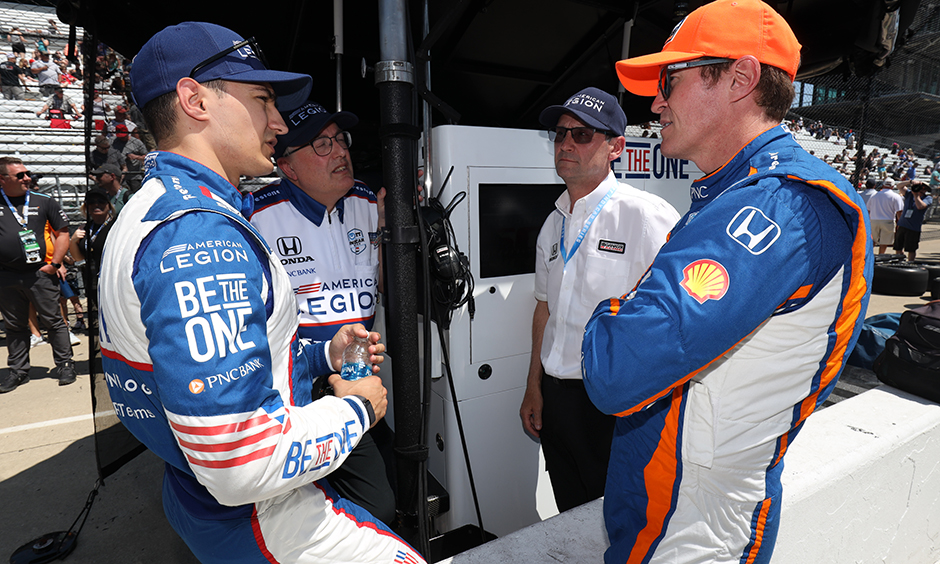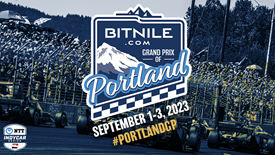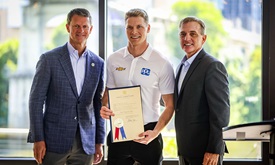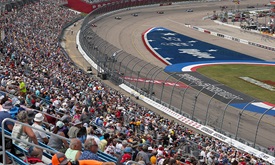The Setup: Nashville with Julian Robertson
AUG 01, 2023
Note: This is a continuing series for INDYCAR.com, with different guests, leading into each race weekend for the NTT INDYCAR SERIES, focusing on various technical challenges of each respective circuit.
The 13th round of the 2023 season for the NTT INDYCAR SERIES is bringing the symphony of horsepower to the streets of Nashville for the Big Machine Music City Grand Prix.
A 2.1-mile, 11-turn (seven left, four right) temporary street circuit runs drivers by Nissan Stadium, home of the NFL’s Tennessee Titans, and over the Korean War Veterans Memorial Bridge into downtown Nashville.
There will be two practice sessions and an NTT P1 Award qualifying bout ahead of the race day morning warmup. Coverage for the 80-lap (168 miles) race will begin at noon ET Sunday, Aug. 6 (NBC, Peacock, INDYCAR Radio Network). The qualifying record on this track configuration length is held by Colton Herta, who threw down a flying lap of 1 minute, 13.6835 seconds (101.601 mph) in the event’s inaugural edition in 2021.
This week’s featured guest is Julian Robertson, race engineer for Alex Palou’s No. 10 The American Legion Honda fielded by Chip Ganassi Racing. Palou led a race-high 31 laps and finished third last season at the Big Machine Music City Grand Prix.
Q: What is it like preparing for a race on the streets of Nashville?
Julian Robertson: Yeah, it's kind of a different track to most of the other street courses. It's extremely bumpy on the bridge parts. That's what we kind of noticed when we first went there. Massively bumpy, particularly coming down off the bridge when you're at top speed, then you're into a whole bunch ... it's very slow corners at either end. It's basically two little groups of slow corners joined by quite long straights. Many street courses at least have some faster corners in them or whatever, but Nashville is unique in that they're all pretty slow, and they're all pretty much the same speed. The new Detroit is probably bumpier, that's taken over the mantle from Nashville. So, with regard to setting the car up, slower corners are the key and dealing with the bumps, et cetera. It's not too bad once you get into the little bits, they're quite tight, slow corners. We do things ... like a generic street course setup wouldn't necessarily work there. There are several things we have to do to cope with the unique aspects of Nashville. You've got to make sure your dampers are decent, all those kinds of things. Then mechanical setup-wise, you just kind of adapt to the track as needed.
Q: So, is it a place you’re trying to maximize ride heights and maximum softness on dampers and suspension?
Robertson: Yeah, you're definitely heading that direction to cope with the bumps and stuff and the bridge. It's the same bridge just going in both directions. Yeah, you just change things as required for Nashville. I wouldn't want to give you the exact stuff we do. Of course not. But it's different to some of the other tracks.
Q: With it being a circuit with slower corners, as you’ve said, does that mean it’s a place that the focus is on mechanical grip over aerodynamic?
Robertson: When you look at Nashville, like when we first saw it, we thought, "OK, tight corners at both ends with two very long straights joining them, do you need to trim out? Or something like that?" That's always in the back of our mind, but it's never really happened. You need maximum downforce for the grip in all the slow stuff at either end.
Q: What is the trickiest part to set up for?
Robertson: Turn 9 and Turn 4. At the end of the bridge, you're bearing right at both ends of the bridge, so you're bottoming hard kind of turning right and then you're having to set up for the left-hand corners, be it Turn 4 or Turn 9. That's probably the toughest part to dial the car in for. The slow stuff is all relatively similar, but yeah, making sure you are not destroying the bottom of the car and obviously you can't brake very well if you are bottoming like crazy. So, yeah, those are the aspects we're looking at there.
Q: What are the challenges to keeping the car balanced over an entire stint?
Robertson: Like most street courses, they pick up grip during the weekend. The green tires there tend to last OK, but not great. So, the black tire has probably been the preferred tire for the races. One of our biggest problems is how hot and humid it is there. We tend to run our driver cool suit at Nashville. There's a couple other places we sometimes run it, but we're almost guaranteed to run it in Nashville to try and give the driver a chance in the race to stay cool. The other thing, race-wise, almost half of it is yellow, I think in the last couple years. 33 laps and 36 laps of yellow in an 80-lap race. It does turn into a lot of crashing and banging and all that kind of stuff.
Q: On paper, Nashville looks like a track position circuit, but we’ve seen wackiness like Marcus Ericsson getting airborne, restarting at the back but finding a way to win. How do you plan for this type of weekend with the randomness it delivers?
Robertson: Yeah, like strategy gets pretty difficult because with so much yellow, a variety of strategies could end up winning the race, and it's tough to know which one is going to. You know, when you've got a more straightforward race, the window opens on this lap, and it's a relatively small window and you can kind of predict how everyone else is going to behave. But Nashville, you don't know how anybody is going to behave just because the yellows come fast and frequent.
Q: How much does that come into play with decisions on air pressure because of the possibility of an abundance of restarts altering how much you want the tires need for balance, understanding the chance of a number of short runs and restarts?
Robertson: Yeah, like you know it's almost going to be a whole sequence of short runs. When Scott Dixon won it last year, he stopped six times (laughing). That kind of says it all. With Alex, we stopped a couple times. It was more straightforward. You want to be in the lead group if you can because it's cleaner. If you are back in the pack at all, you're just going to get crashed into from behind or whatever, or you are going to hit the guy in front or whatever. Yeah, it's pretty tough. There's no obvious strategy. You just have to work with it as it kind of appears.
Q: What is the general gearing layout for Nashville? Do the slow corners make it crucial for being able to have something that helps launch out of the turns?
Robertson: Yeah, the trick's always balancing the shorter gears, first, second in particular, with what the track needs, and that may change during the weekend. You might be able to run shorter gears later on as the track grips up. It kind of depends, particularly when you're getting near qualifying and you're starting to run the green tires, but then in the race you've got to run gears that give the rear tires an easier time. So, you might be a little taller on those gears for the whole duration of the race just to try and keep the tires underneath you. We kind of change gears session by session. One advantage we have with the number of cars we run is we'll try different gear strategies on different cars and all drivers are fast enough that if you see a difference, it's probably a genuine difference in gearing or whatever. We freely exchange information, so we kind of dial it in that way, try a few different things and then hone in on what we think is the best result.
Q: The final question … every driver has a preferred setup and would likely love a neutral balance. Where does Alex rate on that scale, and is he more technical versus having just raw hand quickness?
Robertson: Yeah, he's very technical. He understands what's going on with the car. He can explain it very well. He follows along what we do to the car to make it faster. He kind of understands all that. The good guys always do. Like, when you look at the fast drivers who have won championships, they all understand the car very well. They all relate to it. They can explain what they need. When he is in the car in races, he knows when to save fuel, he knows when to go for it, all that kind of thing. We have to tell him stuff occasionally, but quite often we're about to say something, and he's done it already. He's pretty switched on. All the top drivers are very switched on. They understand what's going on. Ability-wise, he's good at all kinds of tracks or whatever, which helps. I wouldn't say he's better at dealing with one or the other. Every driver always likes a good rear end on a race car. I think it's more of a press thing where you say, "Well, yeah, this driver likes oversteer, this driver likes understeer." I don't know. I don't think too many of them like oversteering and crashing. Most like a car that's just well balanced with a good rear end and away-you-go kind of thing. Some could deal with oversteer better than others, but I don't think too many people prefer oversteer. Yeah, I don't think he struggles with either. Some drivers will say: "Oh, yeah, it's got massive understeer, massive oversteer. I can't deal with it." I think he can kind of deal with either one, but our goal is not to have a car that has massive understeer or massive oversteer. We try and keep it near the line so then he doesn't have to deal with too much.



















